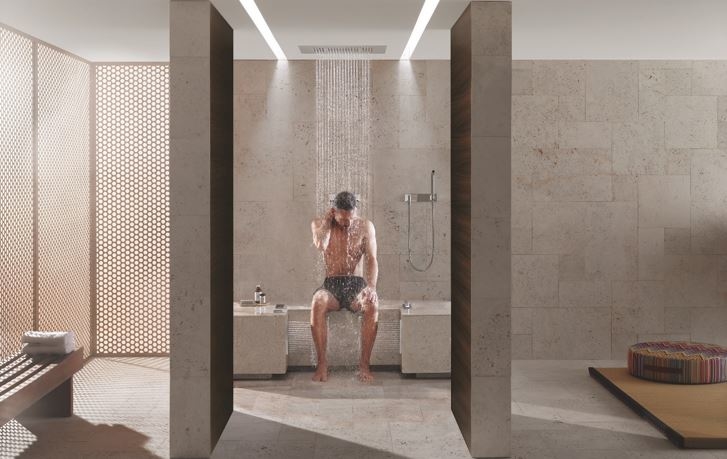“A networked building with a smart control system sustainably contributes to drinking water hygiene. The slightest deviations can be registered straight away”, says Wolfgang Burchard, spokesman for the Blue Responsibility initiative. “With innovative system solutions, operational sequences can be performed and monitored to pre-set parameters.” Even Internet-enabled systems are convenient as they can be controlled via smartphone or computer regardless of the user's location.
ssss
Clean water brings change
Germs form as soon as water is stagnant for a long period of time. “Legionella primarily multiply at 30–45 °C. To make sure the temperature can be kept at a minimum of 60 °C, the water must not stagnate,” Walther Tillner from Oventrop explains. The sanitary ware provider's automation station therefore ensures that a sufficiently high circulation temperature is maintained.
Even in public buildings,sanitary areas are affected by deviations in the intensity of usage. Hygiene flushing helps to safeguard the water quality in the building facilities in the long-term. This is also a specific flushing procedure carried out by Kemper: “We carry out controlled water changes using the parameters of time, temperature and volume”, explains Stefan Pohl. “It is simple to operate via web interface, smartphone, tablet or laptop. Upon request, malfunctions can also be reported directly by e-mail.
Geberit also offers a simple solution for controlled water exchange. ”We offer installers and operators of drinking water installations four flushing programs for individual operation," explains Volker Röttger. “A readout function logs data with information about flushing processes, start of flushing, flushing volumes and temperature.”
With a Schell water management system all fittings in public sanitary facilities are linked to each other by radio or cable. Up to 64 fittings can be connected using the water management server. “Systems such as remote monitoring, remote control and remote maintenance therefore contribute to sustainability due to less mobility being required”, explains Jens Gebers of Schell.
Another concept for the smart control of valves is “peak load optimisation” from Franke Aquarotter. In buildings with peak times of use, such as in stadiums and schools, the system registers an increasing number of users and reduces the flush volume, for example, in the urinal. When the frequency decreases again, a thorough general flush takes place.
ssss
Sustainable drinking water hygiene
The members of Blue Responsibility use digital innovative products to ensure the sus-tainable use of the resource of water. “Drinking water hygiene can be optimised thanks to smart water management systems,” says Wolfgang Burchard. Automated building management therefore creates more sustainability, economically as well as ecologically.
ssss
ssss
foto source: Dornbracht
